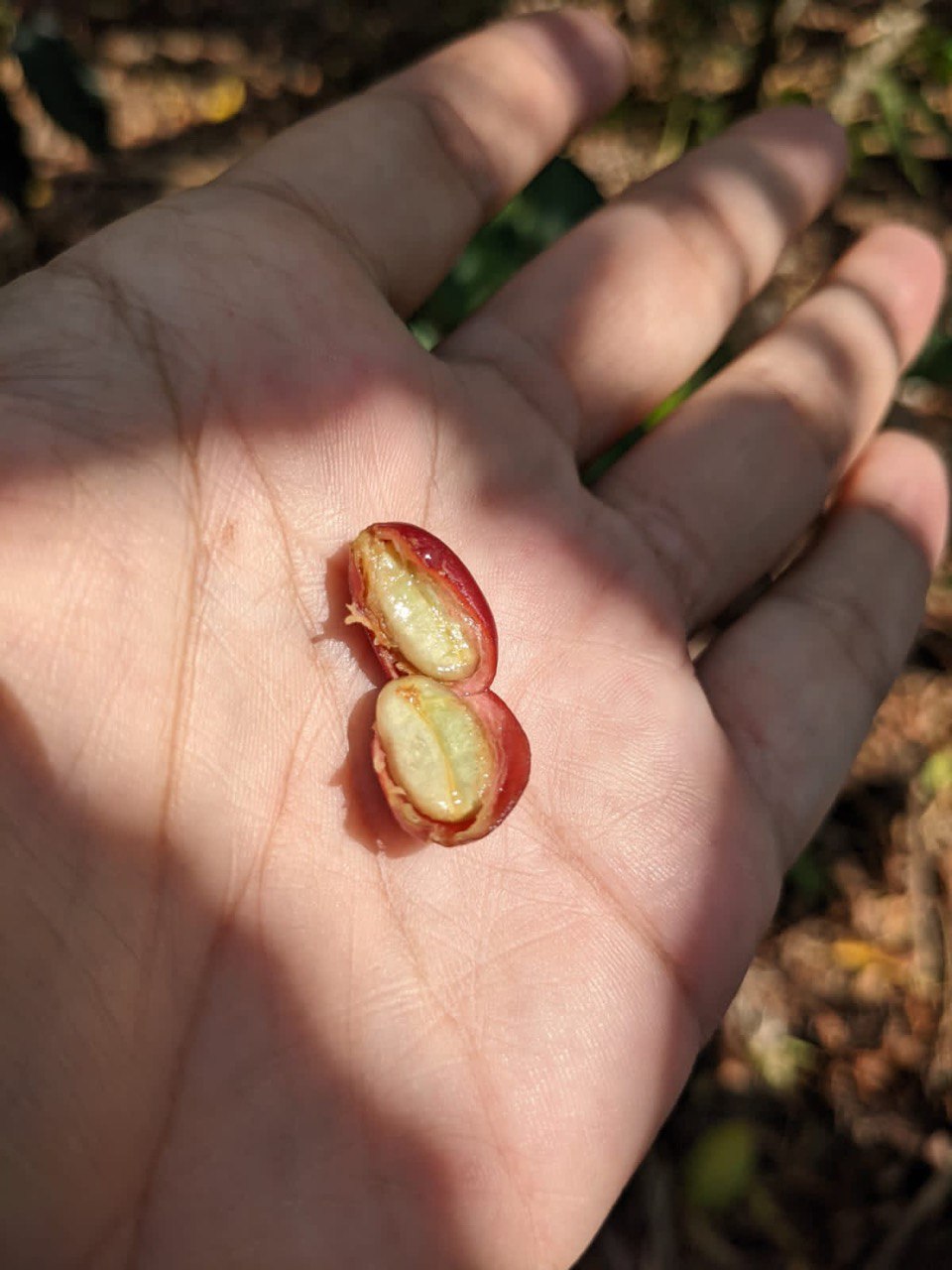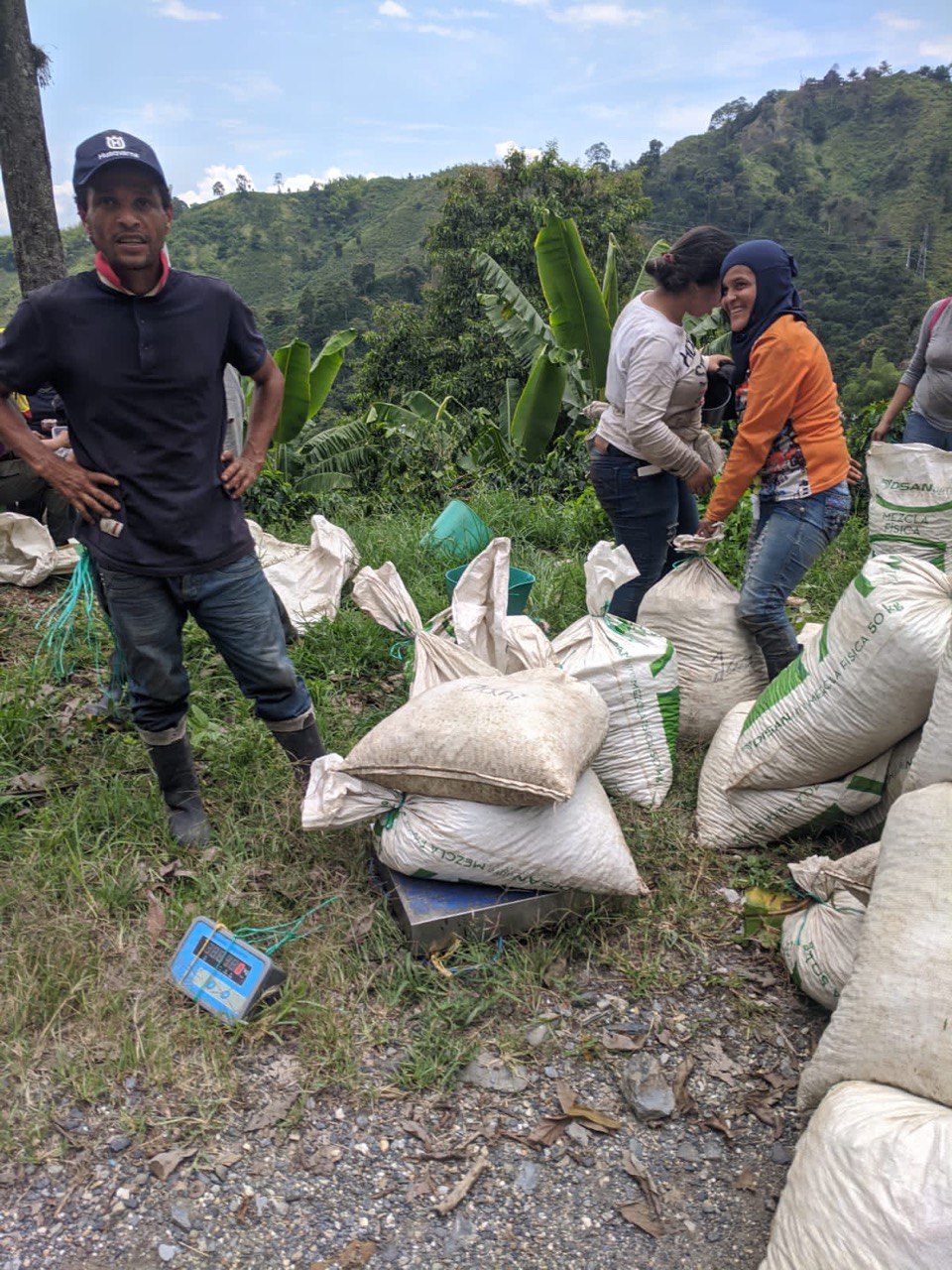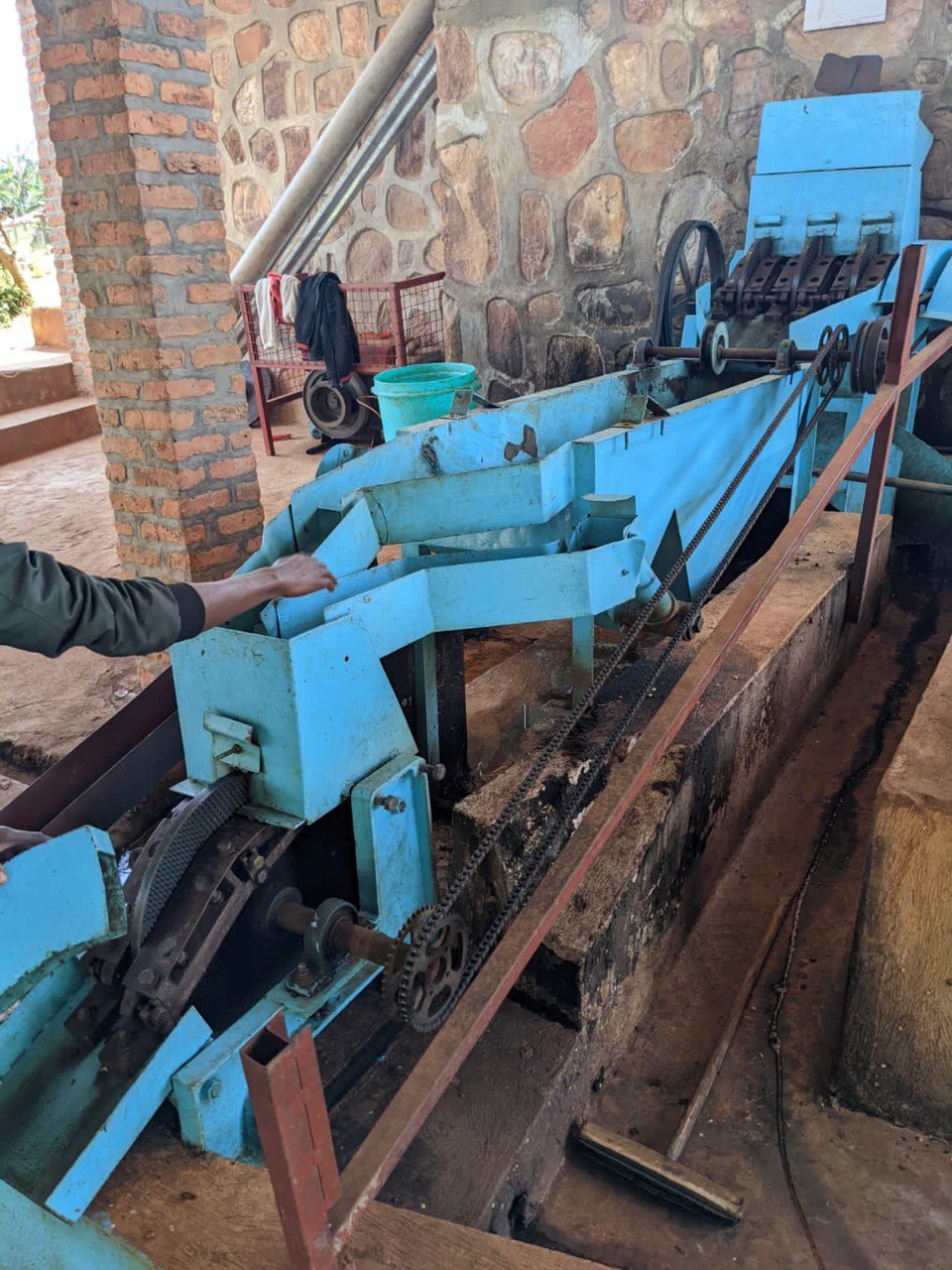In the world of coffee aficionados, few experiences are as enriching as meeting someone who has journeyed through the heart of coffee culture. Rhi Cook is one such extraordinary individual. Having visited 15 coffee farms across the globe, her insights and stories are a treasure trove of knowledge and adventure. I first noticed Rhi when she was enjoying a cup of coffee at Antigua, her laptop adorned with a V60 sticker. Intrigued by the sticker, I struck up a conversation with her, and it quickly became clear that her passion for specialty coffee was as deep as her experiences were vast. From that moment, I knew I had to delve deeper into her remarkable journey. After holding an event at Antigua, the desire for something more permanent took hold, leading me to hastily scramble some questions for an interview. Here are the fruits of that conversation. Keep reading as Rhi takes us on a captivating journey through the lush landscapes and vibrant communities that shape the world of Specialty Coffee.
– Can you tell me a bit about yourself and what drew you to the world of coffee and coffee farming?
I grew up in much the same way as most people in relation to coffee. Coffee was something that was bought at the grocery store or a gas station in a can, and was pre-ground of course. It was a functional beverage that I added a lot of milk and sugar to help me get out of bed, get through a long day, or pull an all-nighter. I NEVER thought about where it came from, who and what was involved in getting it to me, and definitely never realized there were differences in how it could taste and express itself.
That changed for me in 2018 when I started working for a specialty coffee company as their Head of Growth. Marketing requires really understanding your customer and our customers were coffee fanatics. I liked coffee, again for the effects, but I didn’t understand and appreciate it like our customers did. Selling to people who really loved coffee gave me the opportunity to learn about the complexities of coffee and the coffee making process from people who were experts.
To this day it reminds me of the scene in the Wizard of Oz where Dorothy lands in Oz and comes out of black and white into a world fully in color. I was able to see how good coffee could be and it changed everything. I got curious, then I got immersed, and then I got obsessed. What got me then and what continues to pull me into coffee to this day is the magic. This is a seed from a plant that came from one corner of the world (Ethiopia) and has shaped history, created culture, and is a medicine that most of us take everyday. That’s kind of incredible.

– Could you describe the first coffee farm you visited? What stood out to you the most?
The first coffee farm I visited was in Costa Rica while I was studying abroad (erasmus?) in the summer of 2008. I spent 6 weeks living with an incredible host family outside of Monteverde. The funny part is that it was three weeks before I realized that the field of plants surrounding the house were coffee plants. I had never seen them before and my Spanish was BAD, so mostly I was so overwhelmed that I just smiled at everyone who talked to me, smiled, and said “si!”
One morning I was drinking a cup of incredible coffee with a splash of milk from the goats out back and my host father came up to me, making a real effort to engage me. He pointed at the cup and gave a thumbs up and then a thumbs down. I got that he was asking if I liked it and I said “SI!”, like I had said to everything else in the last three weeks, but this time I hugged the cup to my heart. He realized he’d gotten through to me and pointed to the mysterious bushes in front of the house. I then said the other Spanish word I knew; “Bonita!” (beautiful). He kept gesturing and we were locked in a very frustrating and fruitless cycle. Once he had enough he grabbed my cup of coffee out of my hand and started walking to the yard. I jumped up to follow him because I wanted that damn cup of coffee. He then put the cup next to the plant and I got it; these beautiful bushes that I assumed were some kind of tropical fruit were where my coffee had come from.
When I say that this blew my mind- I truly mean it. Up until that point I knew that coffee came from somewhere, but it was an abstract, non-specific concept. To stand in front of a coffee plant, drinking something that came from it opened up a curiosity in me. What part of this bush turns into coffee? How does that happen? Who does it? And most importantly- why doesn’t all coffee taste like this cup of coffee?


– What did you learn about the cultivation of coffee beans and the various processing methods during your visits?
I sadly didn’t learn much about coffee cultivation that first time while in Costa Rica, largely because my language skills were severely limited, but it did make me curious and changed the way I started thinking about my daily coffee. It wasn’t until ten years later in 2018 when I had the chance to go back to a coffee farm, and this time I was ready.
Hacienda Venecia is a lovely 500 hectare coffee farm in the heart of Colombia’s Coffee region. I was traveling through Colombia and had heard that they had a great three day tour for people interested in some relaxation and learning about coffee, so going was a no-brainer for me. Arriving at Hacienda Venecia felt like coming back to Costa Rica in a lot of ways. Coffee requires semi-high (1,000m+), mountainous altitudes so many coffee growing regions can seem similar. They are beautiful, lush, and very green. It’s land where the soil smells alive after rain and it felt immediately good to be there.
I had been learning a lot via the internet and books about the cultivation of coffee for work, but being on a farm, touching the coffee cherries, and seeing the processing beds, really helped me understand the process. It’s one thing to read all the steps and imagine it, and it’s a totally different thing to see the MANY humans who dedicate their lives to cultivating, transporting, processing, and roasting coffee. I learned so much but the biggest takeaways for me from that visit were:
- Coffee plants that grow on one side of the hill can taste differently than the same plants on the other side of the valley because of differences in weather, humidity, and sun.
- When you have really roasty coffee (which most of us are used to drinking), you can’t really taste these differences.
- With a lot of practice you can teach yourself to notice and differentiate the taste differences in coffee that has been intelligently and moderately roasted.
- (Good) Coffee roasters don’t just press a button and “bake” coffee beans. There is a whole science and art to applying heat to maximize the potential expression of the beans.
- The cultivation and production of coffee is equally complex as producing a great bottle of wine, but it goes a step beyond because, whereas you just open a bottle of wine and pour it, with coffee you still have to grind and brew it which will give you MANY opportunities to affect how it tastes.
The TLDR of what I learned on this trip was that there is an incredible amount of thought, effort, and expertise that goes into producing a single incredible cup of coffee.


– What was a day on the farm like? Any eye-opening moments?
I ended up going back to Hacienda Venecia in January of 2020 and stayed through most of the pandemic, so I had A LOT of days on the coffee farm with nothing much to do beyond walking around and observing the coffee cultivation process. I even had the chance to help out with the harvest which was probably the most eye-opening moment. It’s one thing to watch other people do work they are used to and it’s an entirely different thing to participate yourself. During the pandemic in Colombia it was incredibly hard to hire workers to help out seasonally because people weren’t allowed to move freely, but there is a very short window for the coffee cherries to be picked from the bushes before they go bad. Since I was there and they needed help desperately, I was recruited as a worker and trained in how to pick specialty coffee.
I had seen this happen before and even done it for a few minutes myself as part of a coffee tour in Hawaii, but this was very different. We were up at 5AM in the fields which are steep hillsides with large buckets tied to our hips to collect the cherries. You move as fast as you can, hand picking each and checking to make sure it’s the right shade of red. Too red and you are too late. Too light and it needs another day or two to ripen. You are literally racing the sun to get as much done as you can before the sun becomes too strong and the heat too much. Did I mention you are covered from head to toe (even your face) because of bugs, snakes, spiders, and other plants? Let me just say this- it was hands down the hardest work I have ever done for the least amount of money I’ve ever made working.
At midday and at the end of the day what you’ve picked as an individual is weighed and you are paid based on that weight. Based on the weight of what I was able to collect, I would have made $25 across two full days of work. Some caveats here are that I was very slow, and my colleagues pulled in much more coffee than I was able to. Also we were picking specialty coffee varieties on a small, direct trade farm so the price per kilo was significantly higher than what we would have been paid picking lower quality coffee sold as a commodity. Let’s be clear: What most coffee laborers (mostly women) make is not a living wage anywhere in the world. Again it’s one thing to read about the injustices and inequities in coffee production and cultivation, but it was entirely different to witness and experience what it feels like to push your body beyond your physical limits under a hot sun for an entire day for $10.
This is why it’s so important to make sure you are buying coffee that pays people at the origin a quality and living wage. Just because labor can be cheap, does not mean it should be.


– What are some of the best highlights from your origin trips from a social and cultural perspective?
Coffee farms are magical places. I’ve visited many across many different countries and continents and one thing is true of every farm I’ve been to is that there are incredible women who make it happen. Let me say this again: Without women laborers we would not have coffee. Globally, 70% of labor in coffee production is provided by women. As mentioned earlier there is a lot of inequity that has to be addressed, but one effect of this is that the coffee farms I’ve visited have been really peaceful and beautiful places, charged by feminine energy.
In Rwanda, I visited Twongere Umusaruro wa Kawa (TUK), a coffee farm and collective made of 125 women and 10 men just outside Akagera National Park in Eastern Rwanda’s Rukara Sector in the Kayonza District. This was possibly the most special travel experience I’ve ever had. If you know anything about the history of Rwanda, you know that not too long ago the country was ripped apart by genocide that left everyone traumatized, but women had it the worst. The female producers of TUK have lived through unimaginable horrors and coming out of it are dedicated to creating a sustainable system that can support and create stability for their families and communities. These are the women I was greeted by on my visit. They gave me a full tour of their processes from cultivation to processing and in some cases roasting (Most coffee from TUK is kept in its green state and shipped to roasters all over the world). I was really impacted by the teamwork and passion they all had for what they do. Specialty coffee is a labor of love for these producers, not a commodity that’s meant to be mindlessly consumed on the other side of the planet; but a product that tells the story of the beauty and richness of the land that they live on. It’s meant to be enjoyed and celebrated as a reminder of the incredible power they have and the resilience of their people. I’ll never drink another cup of Rwandan coffee without thinking of the hands that created it.

– How has your perception of coffee as a product changed now that you have been to farms?
All of my experiences on coffee farms have given me a great amount of respect for the expertise, science, fortitude, and work that are required to make coffee. Even “poor quality” coffee takes all of the above to get it to our cups. I used to think of coffee as a commodity, something that was detached from land and people. I can’t do that now. When I drink a cup of coffee now I can’t help but look at the scar I have on my right leg from when I was helping with harvest in Colombia in 2020 during the pandemic and fell down the hill (hitting a lot of rocks and coffee trees). I remember how much my body hurt for a week afterwards and the smiles on everyone’s faces when we called it a day. When I’m in the coffee aisle at the store I feel like I can picture the faces of the producers and growers.
Now when I drink a cup of coffee I really try to think about the people that made it happen and the blood, sweat and tears that made the land fertile enough to give us such a gift. Everytime it tastes better, knowing everything I know. That’s what appreciation and understanding does.
– How can we as consumers best support farmers with our consumption habits?
The obvious solution is to buy better coffee, and by that I mean coffee that can be traced back to an origin ideally through direct trade agreements. ‘Direct Trade’, ‘Direct Sourcing’, or ‘Relationship Coffee’ are all terms that are used to indicate partnerships where roasters buy green coffee beans as directly as they can from coffee producers. Because there is no official organization that regulates or standardizes what these designations entail, it can be confusing, but in all cases, it came down to forming partnerships defined by the following values:
- Transparency & traceability
- Long-term sustainability
- Ensuring that producers are making living wages
Ideally buying beans from a local coffee shop is a great choice, but you can always go to your local grocery store and ask if they stock any direct trade coffee options. When enough people ask, businesses start to provide what people are asking for.
Without a doubt, buying coffee that supports a living wage for producers is going to be more expensive, and that’s because the cheaper coffee options aren’t paying living wages. The math is that simple. However, we know that not everyone has the resources to invest in more expensive options, so something I think we should all be doing is thinking more about how much we consume, especially when we know that coffee is tied to human rights violations. In general I’m a big proponent of conscious consumption, both in the economic and personal senses. Yes, buy better coffee when you can, but we all should be more conscientious of how we are consuming coffee. As mentioned above it takes A LOT of work and energy to create a single cup of coffee, so if we’re sucking it down quickly, not even tasting it, are we doing it justice? Even if it is the most ethical, sustainable brand, we can all do better by taking the time to savor the coffee we drink. That’s in my opinion the best way we can all be more respectful and supportive of the millions of people who bring us coffee.

super article ????????